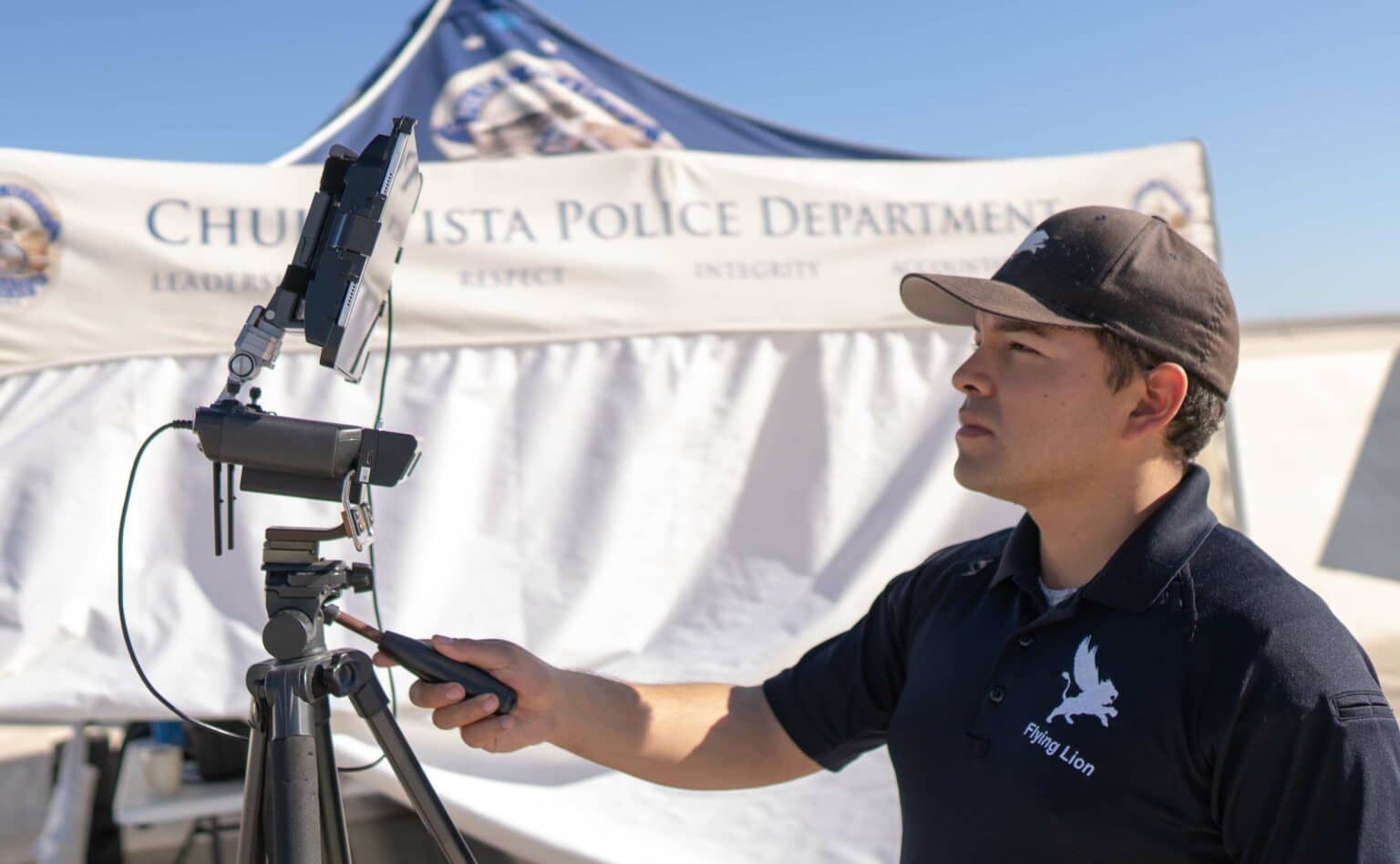IFSJ Exclusive: First responder drones
- March 24, 2023
- 9:26 am


Iain Hoey
Share this content
Charles L. Werner. Founder and Director of the DRONERESPONDERS Public Safety Alliance, tells all about the Drone as a First Responder Program
Several years ago, the Chula Vista California Police Department created the Drone as a First Responder (DFR) Program through the Federal Aviation Administration’s (FAA) Uncrewed Aircraft System (UAS) Integration Pilot Project (IPP). This DFR program launches a drone to high priority calls immediately upon receiving the emergency call.
In most cases, the drone is over the emergency scene prior to arrival of ground units while streaming real time video back to the dispatch center and out to responding law enforcement officers. This drone’s eye view allows responders to have critical information on the circumstances at the scene.
Chula Vista Police Chief Roxanna Kennedy said in an interview: “DFR has become the best de-escalation tool in our department’s tool box and greatly enhanced for the safety of citizens and responders.”
Since the DFR program’s inception, the program has flown over 13,000 flights, assisted in 1534 arrests, avoided dispatching ground units 3284 times, on scene first 7284 times, average response time when first on scene 209 seconds.
The DFR response provides information that helps to increase or decrease priority which ensures that the appropriate resources are responding. It is clear to see the value of the DFR program through de-escalation, returning units to service more quickly, enhancing safety and protecting the community.
While the program was initiated by the Chula Vista PD has now expanded to include fire responses. On one of the first fire-EMS calls, it was able to quickly locate a patient in an alley where the initial call information was vague. Dispatch was quickly able to provide EMS units the location as well as scene reconnaissance. There present responses now also include structure fires, brush fires, and hazmat incidents and provides invaluable information to responding firefighters.
DFR Programs in the United States has been made possible by the innovative visionaries and through cooperation with the FAA which enabled a 2 mile beyond visual line of sight (BVLOS) waiver which allows the drone to fly beyond the normal visual line of sight (VLOS). Today there are over 16 public safety agencies operating a DFR program.
In addition to Chula Vista, some of the other cities include, but not limited to Clovis California, Santa Monica California, Beverly Hills California, Pearland Texas, Brookhaven Georgia, Elizabeth New Jersey, Easley South Carolina with many more in the process.
Even though the DFR programs are similar, each of them have their own nuances based on the operations needed for their specific needs. Some programs may fly only for specific times as needed and others may fly a great deal more for slightly different needs.
The Fire Service
More recently, the Fremont California Fire Department is one of the first fire departments initiating a DFR program with plans to launch from the rooftops of five fire stations which will provide coverage for most of the city.
From a fire service perspective, these flights provide invaluable information for structure fires by providing a full 360 and aerial view to identify hazards that may not be seen from the ground. Thermal imaging can provide heat signatures that may reveal location of hidden fire and structural integrity issues.
During hazmat situations, drones can provide a much better situational assessment of area involved, waterways contaminated and with thermal to be able to see invisible plumes and/or vapor clouds. In both law enforcement and fire service situations, the DFR program is a game changer which enhances safety, provides better operational effectiveness and real time situational awareness.
As DFR has proven to be such an effective and life saving tool, DRONERESPONDERS initiated a Nationwide DFR Working Group to share information between departments, vendors and industry. From this working group, documents have been created on policy, privacy, community outreach, CONOPS and more which can be accessed free in the DRONERESPONDERS.org Resource Center. The goal is to share information to assist other departments advance the implementation of DFR programs.
Drone as a First Responder International Initiative
In November 2022, DRONERESPONDERS and UAS Norway partnered to create the DFR International Initiative to expand this DFR concept globally. Regarding this DFR International Initiative, Anders Martinsen with UAS Norway said, “Drone as a First Responder has had great success in the United States and it is our goal to collaborate between UAS Norway and DRONERESPONDERS to advance this life saving program internationally, and the network both organisations bring together in this initiative can globally help law enforcement and public safety further use drones more widely as a tool and also focus on flight safety during operations.”
About the author
Chief Charles L. Werner (Ret.) is a 49 year public safety professional, the retired fire chief from Charlottesville VA Fire Department and founder/director of the DRONERESPONDERS Public Safety Alliance.
This article was originally published in the March edition of IFSJ. To read your FREE digital copy, click here.



